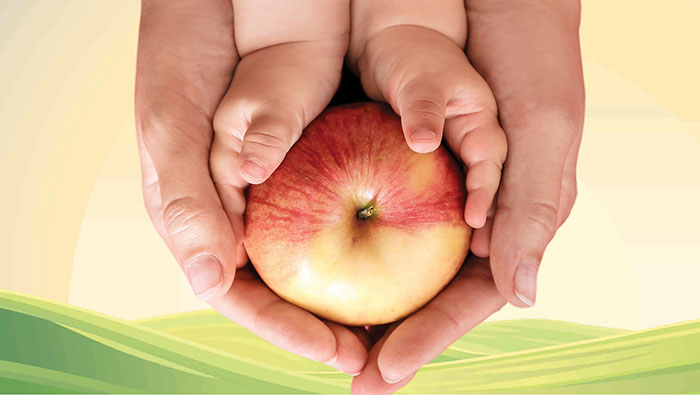
Muscat: Oman has scored full marks when it comes to child immunisation and nourishment, a new report published by UNICEF has said.
The Child Welfare Empowerment Index (CWEI) was published by UNICEF in collaboration with the country’s National Centre for Statistics and Information (NCSI), to ensure the welfare of children in the country across a number of parameters, including healthcare, wellbeing, school enrolment, literacy and safety, among others.
Oman is the first country in the Middle East to map child wellbeing and empowerment with an index that was developed for its own use.
“The Ministry is very much a partner of UNICEF,” said Dr A Basheer, senior internist and diabetologist at Badr Al Sama’a Hospital.
“Usually, immunisation is done for a number of diseases that can affect them strongly at a young age, including measles, mumps, polio, rubella, hepatitis, and tuberculosis, because human beings by nature have their immunity develop after a while. Immunity develops slowly over time, and the age of five years is the immunity development time.”
“Children are most vulnerable to infection, because their immunity is not yet developed, and vaccines help because as long as you have immunity to a particular disease, you have protection, so it is a policy to do this at the earliest,” he added.
“Vaccination is considered to be among the best methods against disease protection so that a child’s immunity can be developed.”
It was a sentiment that had been previously echoed by Lana Al Wreikat, UNICEF’s representative to Oman, who said, “Oman also plays an active role in regional and global agendas. These and other achievements need to be recognised. The Sultanate is a high-income country that has earned recognition for its rapid human development over the last 40 years. Economic stability and income growth have gone hand-in-hand with rapid reduction in child and maternal mortality, universal child immunisation (99 per cent to date), and strong political will and action to address the rights of women and girls.”
Data showed that Oman had the highest immunisation index of 100, a number it also scored when it came to the well-nourished index for children. In addition, the country fared well on UNICEF’s survive and thrive index (91.97), which tracks child survival, growth and development, and that number was slightly higher (93.74) for children under the age of five.
Oman’s immunisation index was calculated based on DPT vaccinations, which are often given to young children to protect them against diphtheria, whooping cough and tetanus. Oman also had a low neonatal mortality (90.63), and overall, the country scored 82.08 in the Child Wellbeing and Empowerment Index among 94 countries. Norway ranked first in the CWEI, with a score of 94.23.
“UNICEF advocates and supports the creation of a protective environment for children in partnership with governments, national and international partners, including the private sector, and civil society,” added Theresa Kilbane, UN child protection specialist. “National child protection systems, protective social practices and children’s own empowerment, coupled with good oversight and monitoring are among the elements of a protective environment.”
Oman was also ranked among the top 20 on the UNICEF Survive and Thrive (S&T) Index, with a global position of 19. The Republic of Korea was placed first, and the 17 countries that followed it were Cuba, Malaysia, Brunei, Kuwait, the UAE, Chile, Maldives, Thailand, Mauritius, China, Uruguay, Barbados, Costa Rica, Armenia, Iran, Turkey and Brazil.
Out of 200 countries, 129 had a lower fertility rate than Oman, with the Sultanate scoring 74.56 on the Low Fertility Index.
Data from the NCSI showed that the infant mortality rate per 1,000 live births stands at 9.4 for Omanis and 7.9 for expats. The under-five mortality rate for every 1,000 live births is 11.6 for Omanis and 8.7 for expats. In addition, the maternal mortality rate is 20.2 for every hundred thousand live births.
NCSI stats also showed that there are, as of mid-2017, 415,791 children aged four and under, 335,194 children between the ages of five and nine, 256,730 aged between 10 and 14, and 234,879 teenagers between the ages of 14 and 19.
“Economists now argue on the basis of available evidence that investment in early childhood is the most powerful investment a country can make, with returns over the course of life many times the amount of the original investment,” said Drs Lori Irwin, Arjumand Siddiqi and Clyde Hertzman, authors of a report on Early Child Development (ECD), which was prepared for the WHO’s Commission on the Social Determinants of Health.
“Globally, societies – rich or poor – that invest in children and families in the early years have the most literate and numerate populations.”
“These are also the societies that have the best health status and the lowest health inequalities in the world. One guiding principle is an equity-based approach to providing nurturant environments for children everywhere,” they added. “Multiple perspectives – from the provision of human and child rights declarations to the realities reflected by research evidence – make clear the importance of equity.”
“Programmes and policies must create marked improvements in the circumstances of societies’ most disadvantaged children, not just in absolute terms, but in comparison to the most advantaged children as well,” they said.
Another senior medical practitioner in Oman said, “The government has made significant progress in providing good healthcare services for its people. There are many volunteer efforts run by the ministry and other public welfare bodies to educate people about the importance of health, especially in the interior areas. I have been practicing here for 30 years and if you compare the social services then and now, the impact has been tremendous.”